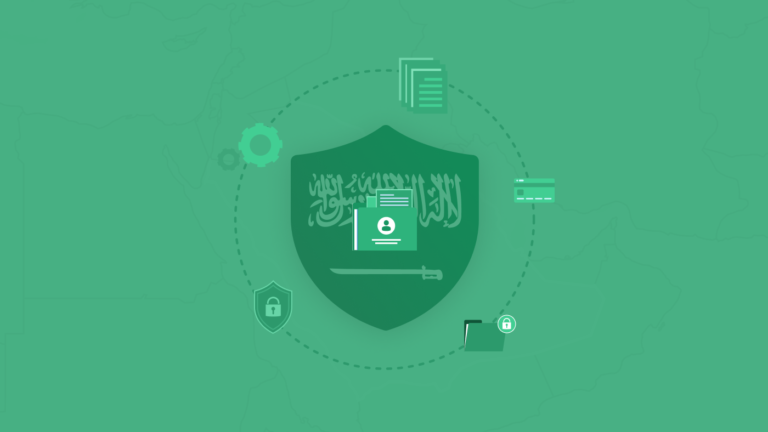Welcome back to our series on the Saudi Personal Data Protection Law (PDPL). In Part 1, we discussed the importance of the PDPL, the conditions that mandate appointing a Data Protection Officer (DPO), and the high-level steps involved. Today, we’ll dive deeper into the process of appointing a DPO to help you strengthen your organization’s compliance posture.
Step 1: Assessing Data Processing Activities
The first step in determining whether you need a DPO is to conduct a thorough assessment of your data processing activities. This involves:
- Data discovery and mapping exercises to identify what personal data you collect, process, and store
- Evaluating the scale and regularity of your personal data processing
- Identifying any processing of special categories of data, such as health information or biometric data
This assessment will give you a clear picture of your data landscape and help you determine if you meet the criteria for mandatory DPO appointment.
Step 2: Consulting Regulatory Guidelines and Industry Standards
Once you’ve assessed your data processing activities, it’s essential to consult the relevant regulatory guidelines and industry standards. This includes:
- Reviewing the PDPL requirements and Implementing Regulations
- Seeking guidance from the Saudi Data & AI Authority (SDAIA)
- Benchmarking against industry practices and standards to understand best practices and common approaches
By aligning with these guidelines and standards, you can ensure that your DPO appointment process is compliant and effective.
Step 3: Creating a DPO Job Description
With a clear understanding of your data processing activities and regulatory requirements, you can now craft a comprehensive job description for your DPO. Key elements to include are:
- Responsibilities such as monitoring PDPL compliance, managing the data protection program, and liaising with authorities
- Required qualifications, including expertise in data protection law and practices
- Soft skills like communication, problem-solving, and leadership that are crucial for success in the role
A well-defined job description will help you attract the right candidates and set clear expectations for the DPO’s role within your organization.
Step 4: Evaluating Hiring Options
When it comes to appointing a DPO, you have several options to consider:
- Internal vs external candidates: You can appoint an existing employee or hire externally. An external appointment may include engaging a specific individual or an entity such as a law firm or consultancy to perform the DPO function.
- Individual vs entity: Engaging an individual DPO allows for a more dedicated focus, while an entity can provide a team with diverse expertise.
- Employee vs contractor: If hiring externally, you can either employ the DPO directly or engage them on a contract basis. Both options are permitted under the PDPL, giving you the flexibility to choose the best fit for your organization.
Consider the pros and cons of each option in light of your organization’s specific needs and resources.
Step 5: Ensuring DPO Independence and Resources
Independence is a critical aspect of the DPO role. The DPO must be able to operate independently, without any conflicts of interest. To ensure this:
- The DPO should not hold a position that involves determining the purposes and means of processing personal data.
- Provide the DPO with the necessary resources and authority to carry out their duties effectively.
- Establish a direct reporting line to top management to ensure the DPO’s voice is heard at the highest levels.
By empowering your DPO with independence and adequate resources, you demonstrate your commitment to data protection and enable them to perform their role effectively.
Step 6: Communicating the DPO Appointment
Once you’ve appointed your DPO, it’s crucial to communicate this both internally and externally. This involves:
- Notifying the SDAIA of your DPO’s contact details
- Informing employees, customers, and partners of the DPO’s role and responsibilities
- Making the DPO’s contact information easily accessible on your website, privacy notices, and other relevant communications
Clear communication helps establish the DPO as a key point of contact for data protection matters and reinforces your organization’s commitment to PDPL compliance.
Case Study: ABC Bank’s DPO Appointment Journey
To illustrate these steps in action, let’s look at the example of ABC Bank, a leading financial institution in Saudi Arabia. As a large-scale processor of sensitive financial data, ABC Bank recognized the need to appoint a DPO to ensure PDPL compliance.
They began by conducting a comprehensive data mapping exercise to understand their data processing activities. This confirmed that they met the criteria for mandatory DPO appointment.
Next, they consulted the PDPL Implementing Regulations and engaged with industry peers to understand best practices. Based on this, they created a detailed job description outlining the DPO’s responsibilities and required qualifications.
After evaluating their options, ABC Bank decided to appoint an internal candidate with extensive experience in compliance and data protection. They ensured the DPO had a direct reporting line to the CEO and was provided with a dedicated budget and resources.
Finally, ABC Bank notified the SDAIA of their DPO’s appointment and contact details. They also updated their website and privacy notices to inform customers and partners of the DPO’s role and how to get in touch.
By following these steps, ABC Bank not only met their PDPL obligations but also demonstrated their commitment to data protection and customer trust.
Conclusion
Appointing a DPO is a crucial step in your PDPL compliance journey. By carefully assessing your needs, aligning with regulatory requirements, and empowering your DPO with independence and resources, you can establish a strong foundation for data protection within your organization.
Remember, the DPO is not just a compliance checkbox but a strategic partner in building trust with your customers and thriving in the data-driven economy. So take the time to get it right, and don’t hesitate to seek expert guidance when needed.
If you have any further questions about appointing a DPO or other aspects of PDPL compliance, feel free to reach out to us at GRC360. We’re here to help you navigate the complexities of data protection and build a resilient compliance framework.
References and Sources
- Saudi Personal Data Protection Law (PDPL) – The legal text of the PDPL.
- PDPL Implementing Regulations – The details and procedures for complying with the PDPL.
- Guidelines on PDPL Compliance – Useful tips for controllers and processors on how to follow the PDPL.
- Saudi Data and AI Authority (SDAIA) – The SDAIA website with information and updates on data protection laws and rules in Saudi Arabia.
- National Data Management Office (NDMO) – The NDMO’s resources on data management and protection best practices.
- Data Protection Impact Assessments (DPIAs) – Tools and guidelines for doing data protection impact assessments to ensure compliance with the PDPL.
This guide provides an overview of the Saudi Personal Data Protection Law (PDPL), which regulates the processing and transfer of personal data. The guide covers the key terms and rules of the PDPL, the rights and duties of data subjects and data controllers, the role and responsibilities of the data protection officer (DPO), and the compliance and enforcement mechanisms of the PDPL. The guide also covers the role and responsibilities of the data protection officer (DPO), the situations where a DPO is required, and the best practices for appointing and managing a DPO








